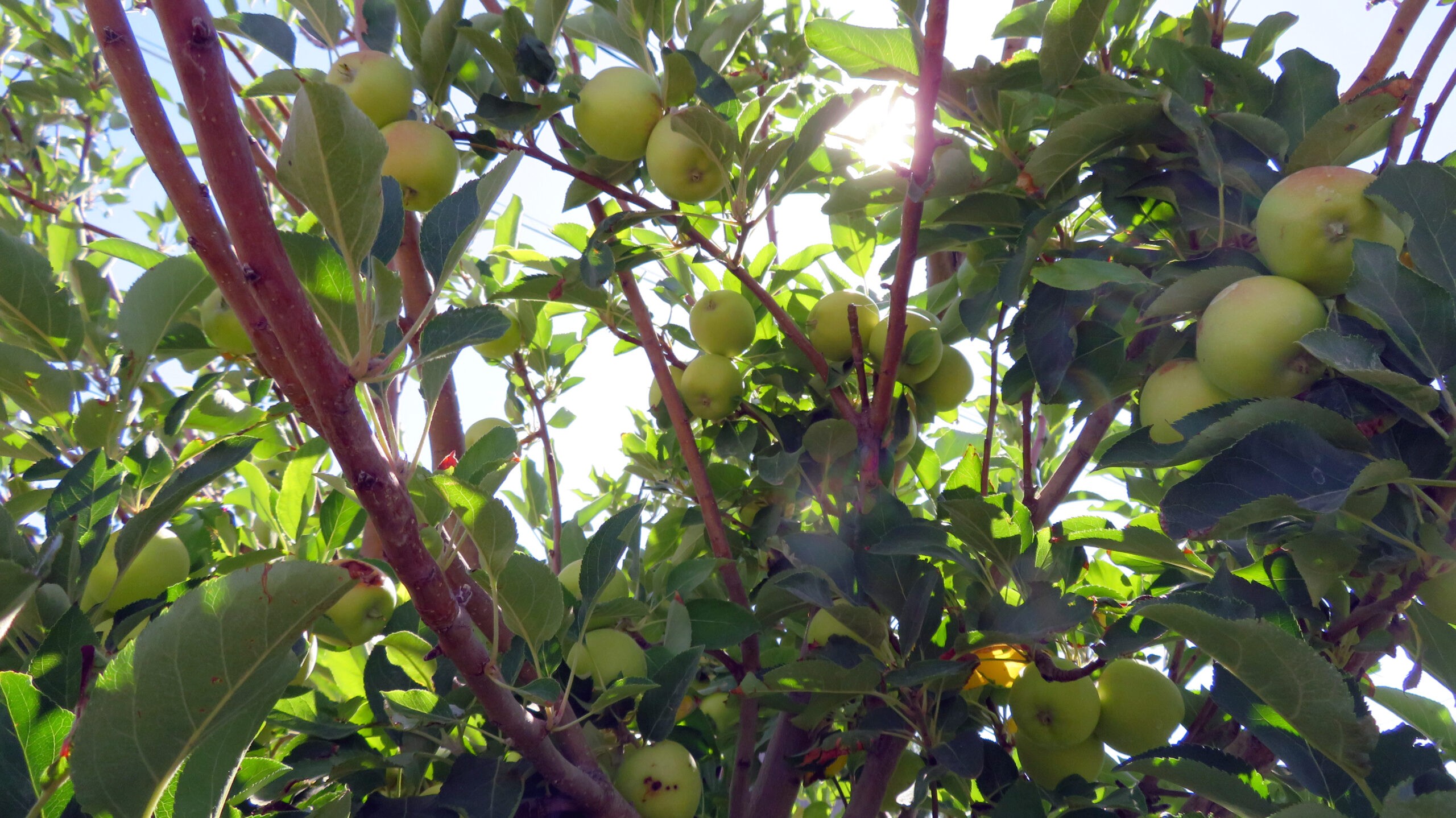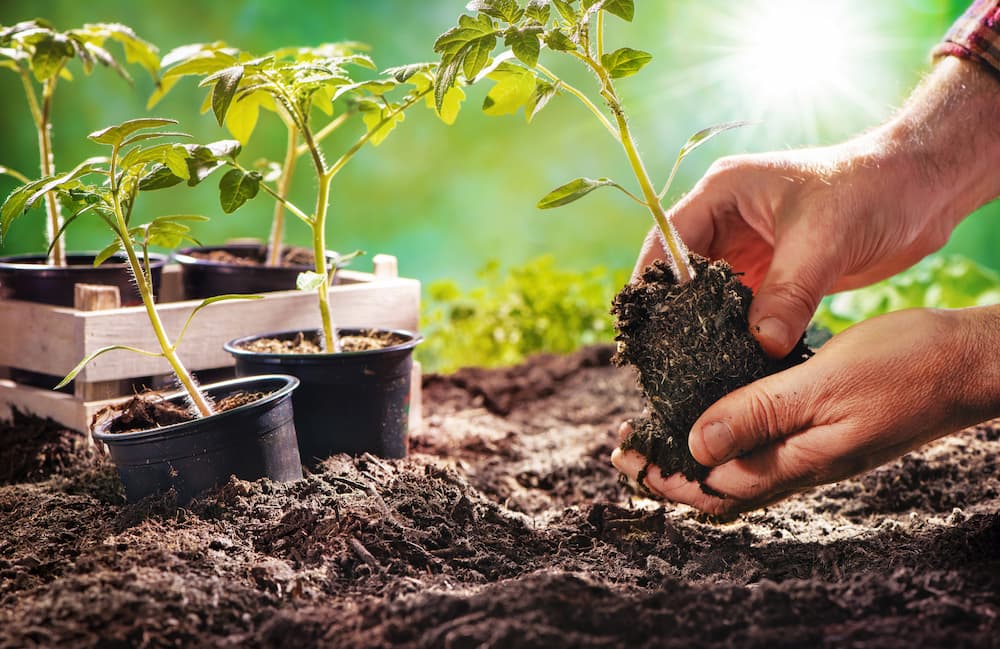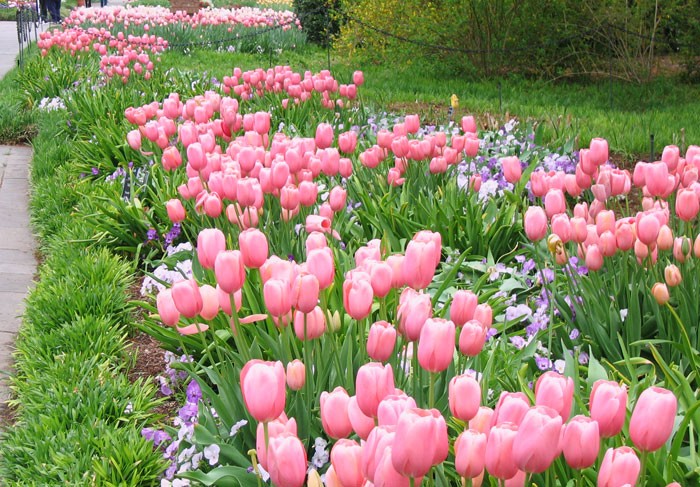How to Plant and Grow Fruit Trees in Texas

Updated December 21, 2023
Here in Texas, we are lucky to have a climate that allows a wide variety of trees and plants to thrive.
Fruit trees are among the most popular options at our North Texas nursery, largely because they offer the best of both worlds: aesthetic appeal in the form of beautiful, lush greenery (and often, springtime blooms), as well as a bountiful harvest of delicious fruit. They can also be a wonderful way to add shade to your outdoor space and also support native pollinators such as bees and butterflies.
We’ve created this handy guide to the basics of growing fruit trees in Texas, providing you with a resource specifically tailored to our region and climate. Of course, if you’d like more information about Texas fruit trees, you’re always welcome to contact or visit North Haven Gardens – we would love to show you our favorite fruit trees and help you choose yours! Our garden coaches can also help you take your fruit trees to the next level and ensure proper care.
The Best Fruit Trees to Grow in Texas
If you’re interested in growing fruit trees, Texas is an ideal location. You’ll find that there are many varieties that can flourish in and around the Dallas area.
The easiest fruit trees to grow in Texas include:
- Peach trees
- Plum trees
- Pomegranate trees
- Fig trees
With the right care, you can also successfully grow:
- Apple trees
- Pear trees
- Citrus tree
Although technically a nut (not fruit), pecan trees are another popular choice – after all, they are the official state tree of Texas!
Among our personal favorites are Texas A&M peach trees (expertly bred to be extremely hardy in our Texas climate), columnar apples (an ideal container or small-space fruit tree), and fig trees (a tough tree that can withstand just about growing conditions).
North Haven Gardens is well stocked with the types of fruit trees that are well suited to our climate, so you can easily browse options to find your favorites. Whether you are searching for just one fruit tree for a small space (like one of our dwarf varieties) or hope to find several unique trees to add to your backyard orchard, our experienced and knowledgeable team is always happy to help.
How to Plant and Grow Fruit Trees in Texas
One of our top tips for growing fruit trees is a surprisingly simple one: above all, choose trees that produce fruit you’ll actually enjoy eating! There’s nothing like that first bite out of a perfectly ripe, juicy peach (or pear, plum, or orange) that you grew in your very own backyard. And if you’re growing some of your favorite fruits, it makes the wait all the more worth it.
One of our team members can help you weigh your options to determine the type of fruit tree that best suits your:
- Planned planting location
- Desired mature size/shape
- Experience level
- Surrounding space, plants, etc.
Keep in mind that some fruit trees need cross-pollination in order to produce fruit, which means you will need to plant two varieties for a successful harvest.
When to plant fruit trees in Texas
The best time to plant fruit trees in Texas is from late December through early March when the trees are dormant.
During the winter, planting and transplanting will be much less stressful for your tree. Also, the tree will have plenty of time to establish healthy root growth before the hot summer arrives, making it easier for it to successfully adapt to its new home.
How to Plant Fruit Trees
- First, select the right location. Most fruit trees need at least six hours of sun, and well-draining soil is a must.
- Then, dig a hole that is equally deep as and twice the width of the root ball. You want the root flare (the spot where the roots meet the tree trunk) to be barely covered so that they have room to stretch out and grow.
- For container-grown trees, gently separate the roots where possible and remove extra soil that may be covering the root flare.
- Backfill and make a small berm. Using the native soil, backfill the hole. Create a berm about four inches tall around the edge of the hole, then fill it with mulch to reduce weed growth and allow effective watering. (Note: A useful illustration of this process can be found here on the Texas A&M AgriLife Extension website.)
- Water the newly-planted tree. Water deeply by filling the bermed basin with a solution of root stimulator. This helps the soil settle around the tree’s root ball and encourages new root growth.
Caring for fruit trees
You might be surprised to learn that giving your new tree too much attention can actually hamper its growth. Of course, you’ll need to properly water the tree and keep the area clear of weeds. But beyond that, you can largely leave it up to the tree – remember, it knows what to do!
Watering your fruit tree
One of the most common questions we receive is, “How often do fruit trees need to be watered?” While there are various factors that will affect the amount of water your tree needs (including your soil, weather, etc.), general guidelines are as follows:
- A good rule of thumb for watering is to water less often, but slowly and deeply. Wrap a soaker hose around and on both sides of the mulched berm. Check every few days by inserting a moisture meter or garden trowel just inside the berm; when the top 2-3 inches of soil have begun to dry out, you can water again. Temperature, humidity, and precipitation will greatly affect how often you need to water, but as the tree gets established, you can water less. Ultimately, the goal is to support your new tree in growing a large-enough root system to sustain itself with only rainwater.
- During establishment, water monthly with root stimulator solution.
Harvesting your fruits
Depending on the variety, your fruit tree may need several years before it can give you a full harvest. We recommend removing all fruit in the first (and often second) year because it allows the tree to concentrate its efforts on getting established and growing.
Peach trees are a fast-producing option, and you can look forward to a small harvest by the second year – and a large one by the third season!
Pruning the tree
One of the most common mistakes new gardeners make is pruning their trees at the wrong time of year. For example, attempting to prune a young tree during the heat of a Texas summer can put the plant under unnecessary stress.
Winter is an excellent time to prune your established fruit trees and prepare them for the spring, summer, and fall ahead. Here’s a step-by-step guide to how to prune fruit trees:
- Look for shoots that are growing vertically rather than in an outward direction. Remove these to encourage the tree to focus its energy on horizontal branching.
- Make sure to leave the central leader (vertical-reaching branch) as the highest point on the tree.
- Just above the point of bud growth, carefully make a cut at a 45-degree angle. Don’t forget to use a clean, adequately sharp tool to avoid damaging the tree or spreading disease.
- Tidy up any areas of the tree with dead, dying, or unhealthy leaves.
Grow Fruit Trees in Texas With the Help of North Haven Gardens
A fruit tree can be a great addition to your outdoor space – and the fruit it grows can keep you well-stocked with fresh, delicious produce! Find more tips on our Fruit Tree Planting Project List and visit North Haven Gardens to find your fruit tree today.
Featured Image: Donna Milner/Shutterstock



